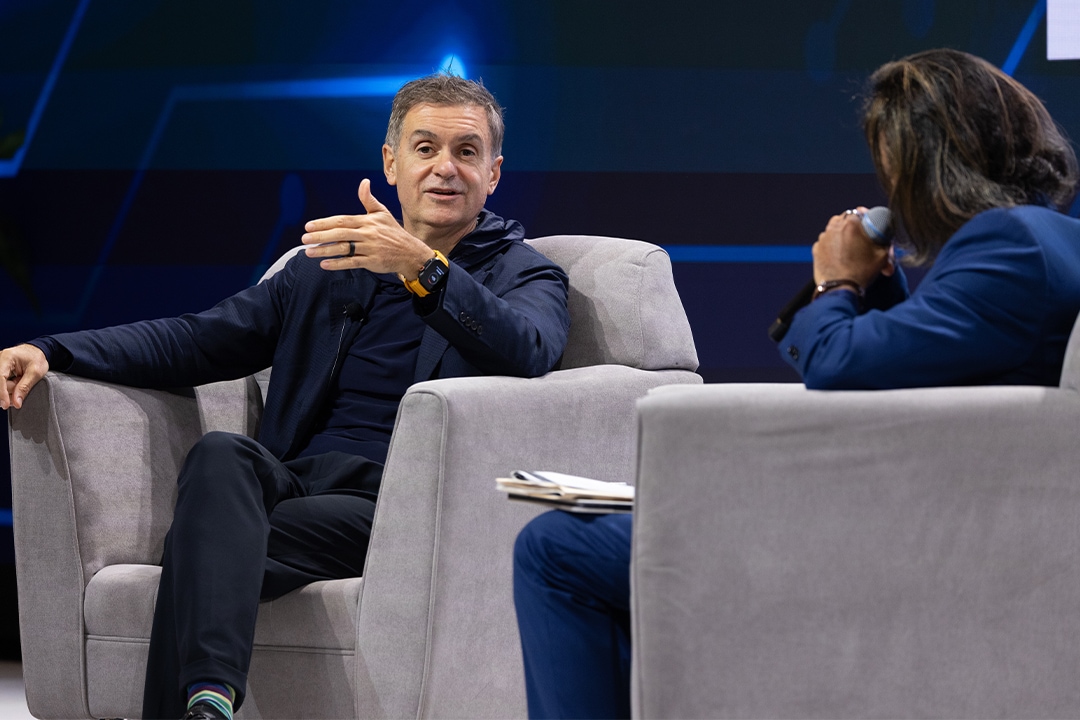Artificial intelligence (AI) has already begun to affect the business landscape, but its impact stands to widen significantly in the years ahead, Goldman Sachs leaders said at the Communacopia + Technology conference in San Francisco.
Thus far, AI has only dramatically changed a few processes with easily assessed outcomes, such as computer coding and customer service. But according to Jung Min, global co-head of Technology, Media, and Telecommunications in Goldman Sachs Investment Banking, “There are hundreds of use cases that are just as verifiable as software development.”
Marco Argenti, the firm’s chief information officer, analogizes one of the most popular ways ‘reasoning’ AIs are trained (reinforcement learning) to the game of “hot” and “cold,” in which a searcher finds their way to a hidden object by getting told by a second person that they’re getting nearer or farther from it. For processes with a clear, correct answer (such as computer coding, where the resulting program either works or doesn’t work), AI models can be trained by a “hot-and-cold”-style approach to find the right answer, and will learn to find the right answer more quickly the next time around. But some business processes are more nuanced, and there is not a single correct answer. “If you don’t know where the thing is hidden until you find it, then how can you play hot and cold?” Argenti asks.
It is this challenge “that has slowed down adoption in the enterprise,” Argenti says. “But what smart companies are doing is reprocessing their processes in order to make them verifiable by an AI.”
How are businesses using AI?
Like Min, Argenti is confident that processes requiring more nuance will eventually be automated as well—but he says in order for this to happen, humans will have to document their processes in a way that makes the steps understandable and the accuracy of the outputs provable.
Inside Goldman Sachs, “We are looking at every single process in the firm right now and thinking about how AI could interact with this process,” Argenti says. “The question is, how can a company model their processes in a way that can be verified by a machine?”
Min points out that in general, these processes are segmented across three separate parties: the first person performs the work, the second reviews the work, and the third person signs off on the work. “You’re going to be able to create agents to do a lot of that,” Min says.
He adds that on the streets of San Francisco, self-driving cars have become a common sight. “There are many business processes that require about as much judgement as driving—but unlike driving, they’re not life and death; typically two people are going to review and sign off on the work.” Min says. “So that’s why I think that this workforce automation is going to happen much faster than people think.”
How will the economy be affected by AI?
Goldman Sachs Research Chief Economist Jan Hatzius says that the ability to replace low- and mid-value-added white-collar tasks with AI should eventually boost annual productivity growth by 1.5pp per year before considering offsets.
At the same time, Hatzius says the labor picture could remain more resilient than some fear. “Over the decade, you might get 6-7% of total employment displaced by AI,” Hatzius says. “But since it happens over a long period of time, people will be absorbed into other industries – so the impact on the unemployment rate is going to be a lot smaller than that.”
He includes a key caveat, however. “As long as the economy is still growing and the market is still doing well, there is much less pressure on companies to rationalize. But if there were to be a downturn in the economy, then we would get much more adjustment, and therefore a bigger labor market impact,” Hatzius says.
He adds: “The really important point to keep in mind is that disruption tends not to be a linear process.”
This article is being provided for educational purposes only. The information contained in this article does not constitute a recommendation from any Goldman Sachs entity to the recipient, and Goldman Sachs is not providing any financial, economic, legal, investment, accounting, or tax advice through this article or to its recipient. Neither Goldman Sachs nor any of its affiliates makes any representation or warranty, express or implied, as to the accuracy or completeness of the statements or any information contained in this article and any liability therefore (including in respect of direct, indirect, or consequential loss or damage) is expressly disclaimed.
